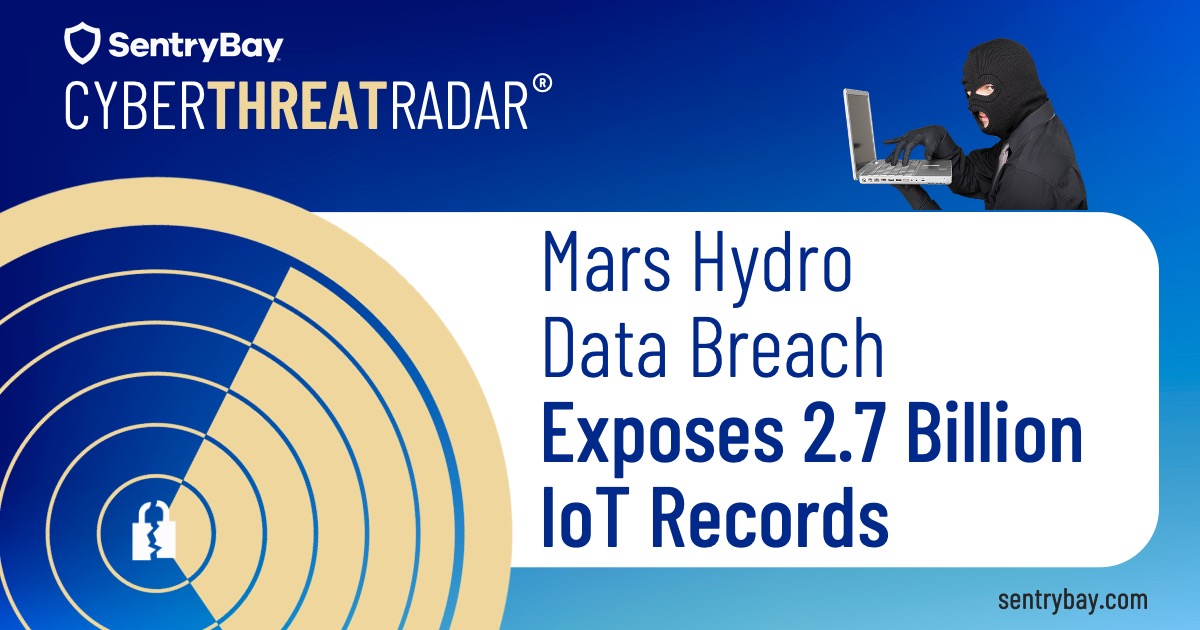
Cyber Threat Radar – The Mars Hydro data breach has revealed the vulnerabilities inherent in Internet of Things (IoT) security, exposing a staggering 2.7 billion records due to an unprotected database. This breach, uncovered by cybersecurity researcher Jeremiah Fowler, highlights the critical risks of poor data protection measures in IoT-connected environments.
With IoT devices becoming more integrated into smart homes, industrial automation, and critical infrastructure, the consequences of such breaches extend far beyond leaked data—they open the door to sophisticated cyberattacks, surveillance threats, and large-scale botnet exploitation.
How the Mars Hydro Data Breach Occurred
Fowler discovered an unsecured database belonging to Mars Hydro, a China-based manufacturer of IoT-controlled grow lights and smart home devices. The database, which was left open without password protection, contained 1.17 terabytes of sensitive records, including:
- Wi-Fi network names (SSIDs): A critical vulnerability allowing attackers to identify and exploit unsecured networks.
- Millions of passwords and email addresses: Providing cybercriminals with easy entry points for credential stuffing attacks.
- IP addresses and device ID numbers: Enabling precise geolocation tracking and unauthorized access to devices.
- API details and URL links: Creating opportunities for man-in-the-middle (MITM) attacks and system takeovers.
Upon further examination, Fowler linked the breach to LG-LED Solutions Limited, a California-registered company, and Spider Farmer, another IoT manufacturer specializing in agricultural grow lights, fans, and cooling solutions.
The Growing Threat of IoT Vulnerabilities
The IoT industry has long been plagued by inadequate security measures, and the Mars Hydro data breach further exposes the dangers of unencrypted data storage and weak authentication practices. Studies show that 57% of all IoT devices have severe security flaws, and an alarming 98% of IoT data is transmitted without encryption.
This lack of security makes IoT devices prime targets for cybercriminals who can exploit them for:
- Botnet attacks: Compromised IoT devices can be used to launch DDoS attacks or spread malware across networks.
- Surveillance and espionage: Attackers can use IoT-connected cameras, microphones, and sensors for unauthorized monitoring.
- “Nearest Neighbor” Wi-Fi Exploits: Cybercriminals can hijack nearby networks, as seen in the 2024 APT28 (Fancy Bear) attack, where Russian hackers infiltrated a Washington, D.C. organization by compromising a neighboring Wi-Fi network.
Why the Mars Hydro Breach Matters
The scale of the Mars Hydro breach is alarming not just because of the volume of leaked records, but also because it exposes users’ private networks, device settings, and personal information to a range of cyber threats.
If exploited, attackers could:
- Gain unauthorized access to connected devices, allowing remote manipulation.
- Perform MITM (Man-in-the-Middle) attacks, intercepting sensitive communications.
- Exploit hardcoded passwords to infiltrate home and business networks.
- Leverage stolen credentials for phishing, identity theft, and ransomware attacks.
With IoT adoption skyrocketing across industries, companies must recognize that data security is no longer an afterthought—it is a necessity.
Mitigating Future IoT Security Breaches
To prevent similar large-scale IoT breaches, organizations and users must take proactive cybersecurity measures, including:
- Encrypting sensitive data: Ensure that all logs, API keys, and user information are stored securely and with robust encryption.
- Changing default passwords: Many IoT devices are compromised due to factory-set credentials that users fail to update.
- Implementing access controls: Restrict database access to authorized personnel only, using role-based authentication.
- Conduct routine penetration testing: to identify and fix vulnerabilities before attackers can exploit them.
- Limiting public cloud exposure: Move sensitive databases to private, secure environments, reducing the risk of unauthorized access.
As IoT technology continues to evolve, so must security practices. Organizations cannot afford to ignore the growing risks—or the consequences could be catastrophic.
The Need for Advanced Endpoint Threat Prevention
The Mars Hydro data breach is yet another example of how exposed endpoints and weak authentication mechanisms create massive cybersecurity risks.
To counter these threats, many companies are turning to advanced endpoint protection solutions like SentryBay’s Armored Client, which provides:
- Anti-keylogging technology: Prevents attackers from stealing passwords and sensitive keystrokes.
- Anti-screen capture defense: Blocks malware from capturing on-screen credentials and confidential data.
- Anti-malicious DLL injection: Stops cybercriminals from executing unauthorized code within IoT and cloud applications.
By implementing SentryBay’s device-centric security, businesses can harden their endpoints, block unauthorized access, and prevent credential theft—even in cases where network vulnerabilities exist.



